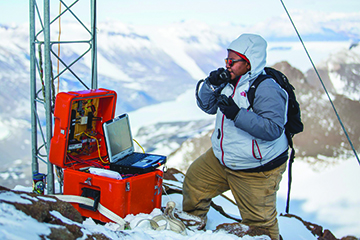
by Regan Bervar | Jul 23, 2021 | General Featured
“Antarctica has this mythic weight. It resides in the unconscious of so many people, and it makes this huge impact, just like outer space. It’s like going to the moon.” Jon Krakauer
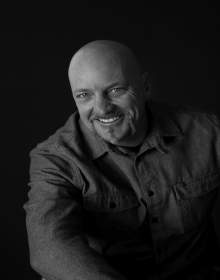 by Luke Schmaltz
by Luke Schmaltz
Currently, there is a palpable mood of distaste among Denver’s working-class citizens. Jaw-dropping rent rates, lack of jobs offering a sustainable wage, mounting inflation and rising crime have a lot of people looking for a way out.
If these circumstances resonate, perhaps you have fantasized while stuck in bumper-to-bumper traffic and wondered to yourself, “What if there was somewhere I could go where I could work at my chosen profession and be properly compensated while not having to commute, pay rent or spend money on food or clothing?” If you think this sounds too good to be true, think again. The portal to this magical land of vocational and existential idealism is located right in your own backyard. It’s the Leidos Antarctic Support Contract (ASC) office — just south of Denver in Centennial, Colorado.
Step Right Up
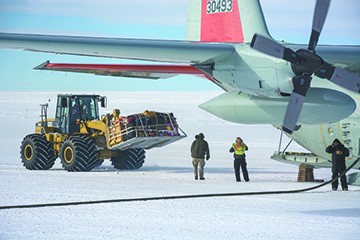
A loader brings a pallet of luggage to a recently-landed LC-130 that’s also preparing to depart from the Amundsen-Scott South Pole Station. Planes can only stay on the ground for a short period of time at the pole, on account of the extreme cold.
The communications agent at the ASC, Elaine Hood, explains, “Interested people should visit www.Leidos.com/Antarctica to learn about the Antarctic Support Contract. That page lists the various companies that hire for different jobs in Antarctica.” Website visitors will find an amalgam of overlapping agencies with similar jurisdictions and functions. The Centennial recruiting headquarters is, in fact, an umbrella organization involving an extensive network of subcontractors. These include GHG Corporation, Gana-A’Yoo Services Corporation (GSC), PAE (Pacific Architects and Engineers) and University of Texas Medical Branch (UTMB). Each agency maintains a presence in the Centennial Leidos office while using a variety of extraneous recruiting resources such as SEO-enhanced websites and independent HR campaigns. Many recruiting sites are domains named after popular search terms such as www.cool antarctica.com and www.wandereatwrite .com.
Vocational Abundance
Currently, there are listings for dozens of available IT positions including network engineers, computer technicians, broadcast engineers and web applications developers as well as a few hands-on positions such as antennae rigger and mammal observer. The medical contingency is also hiring for positions such as physicians, mid-level practitioners, dentists, nurse administrators and physical therapists — to name a few. The trades are also hiring with listings for shop foreman, fleet operations foreman, plumber foreman, preventative maintenance foreman, cook, electrician, carpenter, firefighter, boat handler, diving officer, radio operator and many more.
Elaine Hood places emphasis on the fact that Antarctica, for obvious reasons, is in fact experiencing a labor shortage. “The more skilled trades positions are difficult to fill simply because they require certifications and years of experience doing specific jobs such as being a refrigeration mechanic. Yes, we need freezers in Antarctica to preserve frozen food as well as science samples! Positions can also be difficult to fill because people must leave behind their family and friends for six months, over holidays, birthdays, anniversaries, and other milestones that occur between October and March.”
The Upside Down

Food being prepared at McMurdo Station, Antarctica, for the Thanksgiving holiday meal. Fresh vegetables, known as “freshies,” are greatly desired where they are scarce. Photo credit: Mike Lucibella, NSF
Currently, a hiring campaign is underway for the upcoming summer season. In Antarctica, this season goes from October through February while winter goes from February until October. The summer is the easier of the two, featuring average daily temperatures of around zero degrees Fahrenheit while a “winter over” as it is locally known, can feature a consistent deep freeze chill of 30 to 40 degrees below zero. “Everything is more difficult in Antarctica,” Hood explains, “and takes longer than it would off the continent. That can be frustrating. While we try to have spare parts in warehouses, occasionally something may break on, say, a snowplow that will require that part to be flown in. That one part can take weeks to reach Antarctica.”
Hood continues, “Some positions receive few applications and are difficult to fill, while others receive thousands of applications and are easy to fill. For example, finding experienced tradespeople — diesel mechanics, plumbers, electricians — can be difficult. We need people who can troubleshoot and resolve problems based on years of experience. People with that level of expertise may not be in a personal situation where they are willing to be away from family for six months over the holidays (Sept.-March), so we don’t receive as many applications for those positions as we would like. On the other hand, working as a steward in the cafeteria is a position that hundreds of people may apply for.”
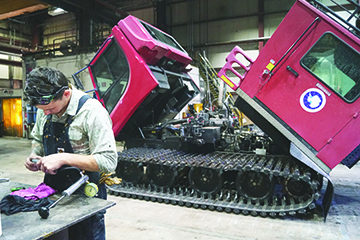
Light Vehicle Technician Matt Means works on a PistenBully inside McMurdo Station’s Vehicle Maintenance Facility. Mechanics are a critical position in support of scientific research in Antarctica. Photo credit: Elain Hood, NSF
Unexpected Discoveries
If you land a job, you might end up staying longer than you planned. “In general, we have about 60% return [of seasonal workers],” Hood begins. “We have many people who will take an entry level position just for the opportunity to be paid to work in Antarctica. Let’s say they are a high school teacher who thinks she is taking a one-year break from teaching. She may work as a steward in McMurdo Station, replenishing food on the cafeteria buffet line, but as the season progresses, she realizes she has met the most extraordinary people and applies to return for a second season in the Supply department. The research stations have supply warehouses where everything from plumbing, food, electrical and other inventory are kept — remember there are no supermarkets and Home Depots in Antarctica. So, she applies for and returns for her second season in the Supply department and the next thing you know she has been deploying for a dozen years when her original plan was to only go one time. We have people who have been doing this for 10-20 years.”
An Adventure Awaits

McMurdo Station Communications Supervisor Teri Cotton tests a radio installation from atop a mountain in the Transantarctic Mountains. Antenna riggers and radio repair and maintenance are two of hundreds of jobs required to support the U.S. Antarctic Program. Radio repeaters are installed to facilitate communication in the region of McMurdo Station. Photo credit: Johnny Chiang, NSF
Should you get hired as a U.S. citizen, your likely landing place will be McMurdo Station — the logistics headquarters of the United States Antarctic Program and the largest of three research stations run by the National Science Foundation. The other two are Amundsen-Scott South Pole Station and Palmer Station. At McMurdo, which is more like a small town than a research station, you will live and work among 1,000 or so other residents for the duration of your contract.
Elaine Hood breaks down what to expect, “Once a contract is offered, the candidate must complete a medical and dental examination to be deemed physically qualified (PQ’d). Each of the three USAP stations has a medical clinic and a doctor, but there is no dentist. The medical clinics are not equipped to handle long-term care for major health crises such as strokes or heart attacks. The objective of the PQ is to screen out applicants whose health may be at risk of a major incident.
Once you have been PQ’d, you get advice on what to pack for your particular job, such as work boots and long underwear. You will be flown to either Christchurch, NZ, or Punta Arenas, Chile, where you will receive cold-weather clothing — heavy parka, gloves, wind pants — that will be returned to inventory upon your departure from Antarctica. During this time, you will attend training and orientations so that when you arrive in Antarctica you are ready to begin working.”
A Living Wage
If you’re thinking about taking the plunge, consider that with no extraneous spending temptations or basic living expenses, you might be able to save a fairly sizable chunk of change. Then, when you return to Denver, perhaps you can afford a down payment on an insanely overpriced house. Or you can sign another work contract and turn around and go back to Antarctica, hoping perhaps on your next return things in your beloved Mile High City have improved.
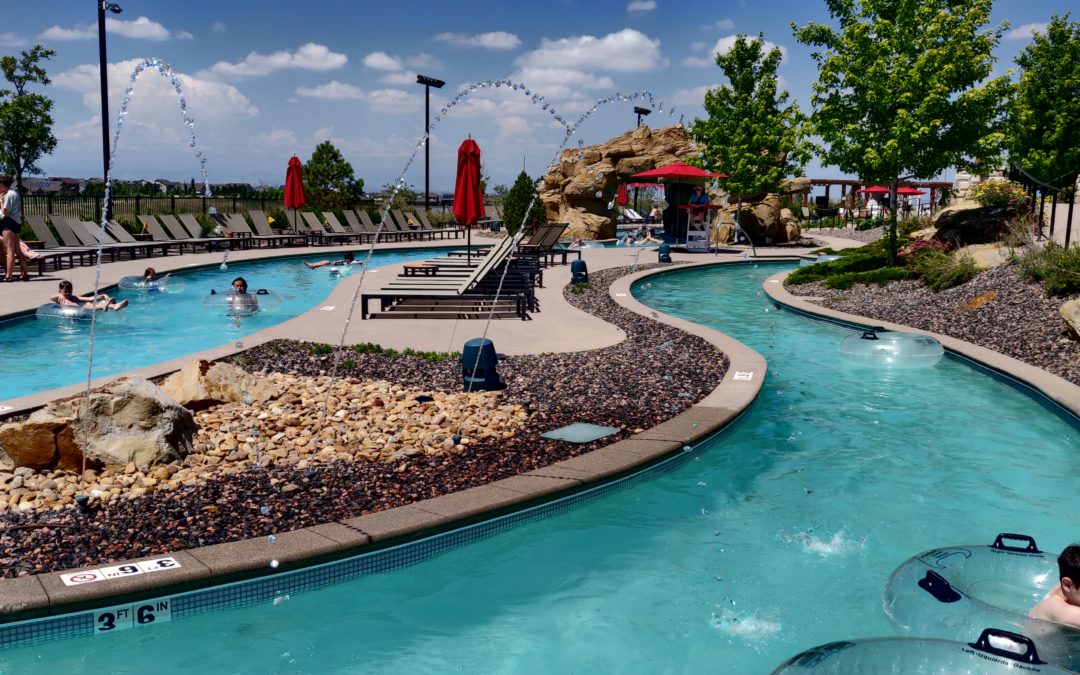
by Mark Smiley | Jul 23, 2021 | Travel
Princess And Pirate Themed Summer Activities
by Mark Smiley and Eleanore Smiley (10 years of age)
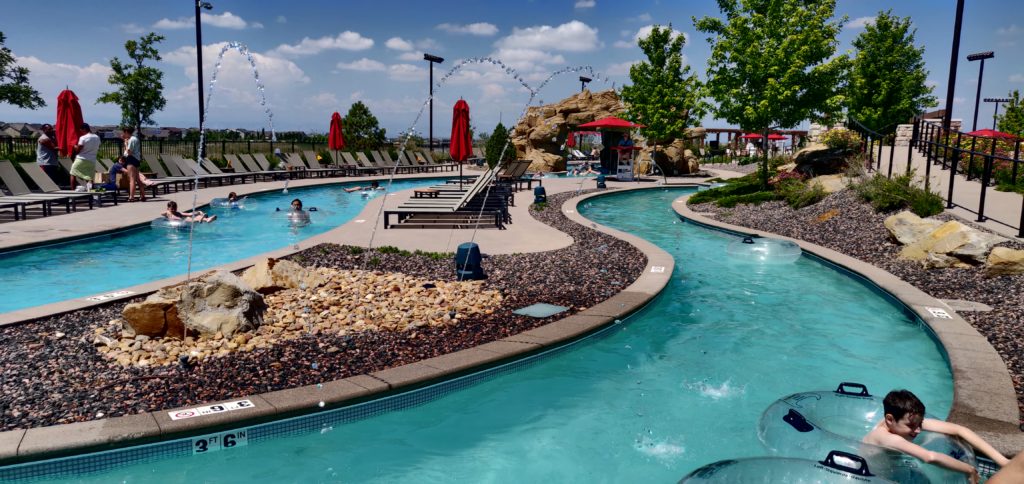
Lazy River: Relax on an inner tube as you float around the lazy river and the Colorado sun shines down on you. The lazy river features a rocky grotto, water jets, and bubblers to enhance the fun.
The Gaylord Rockies Resort is now fully open and operational and mask free for those that are vaccinated. The Gaylord always finds unique ways to incorporate fun themes for kids and adults of all ages. The Summer of More has programming to help guests celebrate the upcoming season with a wide variety of family-friendly events and activities including a scavenger hunt, Build-A-Bear Workshop, escape room, roasting s’mores, and an art studio.
“Princesses and Pirates is the theme this summer,” said Eleanore Smiley, 10 years old and recent guest. “10+ year olds might think princesses and pirates are kiddish but it isn’t. I (as a 10-year-old girl) had the best time. Personally, my favorite thing to do out of the theme was the Scavenger Hunt. You will be given a book with clues and during the scavenger hunt you will have to look at the clue very carefully. You will look for a pirate chest with different colored gems and once you find the chest circle the gem color that’s in the chest. Once you finish you will go to the ticket desk to claim your prize.”
Pirate and Princesses Academy is also a fun activity for the kids. It costs $12.99 per person and is a live entertainment show. You will step into a fantasy world and experience the story of the Sword Mistress, Pirates, and Princess Evergreen herself in this interactive show. Become an honorary pirate or princess for the day, take the official oath, and more.
The art studio is an activity that is a must do while at the resort. This fun, interactive family painting activity allows each participant to select a canvas with either a pirate ship or princess castle that they paint to take home and enjoy. Canvas, paint, brushes, and apron are provided. On-site artist available. The cost is $14.99.

Bar & Grill: Conveniently located just steps from the pool and lazy river, Arapahoe Springs Bar & Grill lets you grab a bite without having to leave the fun in the sun. Indulge in All-American favorites and refreshing beverages to quench your thirst during your day.
There are plenty of restaurants to choose from at the resort to make it a carefree stay for you and your family. Arapahoe Springs Bar & Grill, Mountain Pass Sports Bar, Vista Montagne, Old Hickory Steakhouse, and Monte Jade all offer a variety of cuisines conveniently located. In addition, The Cocoa Bean, Ski Village Cantina, and Rockies Marketplace offer a quick meal to go. Most of the restaurants accept orders through the Marriott Bonvoy app. Be sure to download the app before your stay to know when your room is ready and familiarize yourself with the resort.
Mountain Pass Sports Bar is a popular dining option inside the resort. They serve burgers, sandwiches, nachos, salads, and draft beer. The 75-foot flat-panel TV is the featured part of this sports bar. Arapahoe Springs Bar & Grill is located near the pools and a convenient way to order lunch while enjoying the pools and slides.
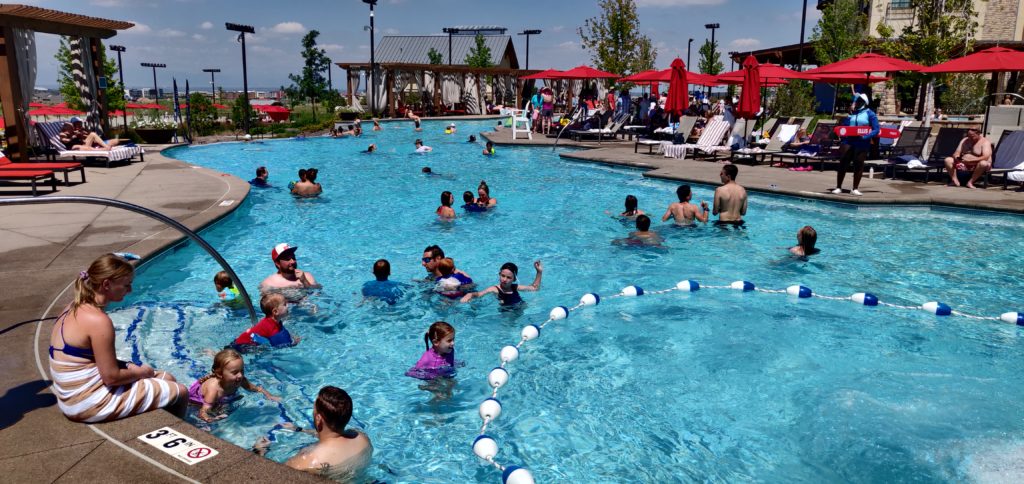
Outdoor Pool: The outdoor pool is heated and open year-round.
The pools are definitely the resort’s main attraction. There is an indoor and outdoor pool (which includes an infinity pool), an outdoor lazy river, and three water slides. This water park is spread out over 22,000 square-feet which allows for proper social distancing. The entire resort is situated on 85 acres of land, so it never feels crowded even under normal circumstances. Guests can reserve a cabana if they want their own dedicated space. Or they may snag a chair by the lazy river and relax.
The Gaylord Rockies Resort is located at 6700 North Gaylord Rockies Boulevard. For more information about the resort or to make a reservation, visit www.gaylordrockies.com.
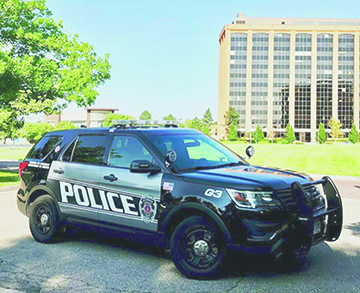
by Regan Bervar | Jul 23, 2021 | Glendale City News
 by Luke Schmaltz
by Luke Schmaltz
Thus far in 2021, active shooter events have occurred over 150 times in the United States. People are going about their business — be it school, work or play — and in an ear-splitting instant, life turns from normalcy to chaos, confusion, and potential death. This is when the instinct to survive kicks in, and you have three options: Run, Hide, Fight (RHF).
However unfortunate, this patently American phenomenon could occur at any point. It is important for survival to understand the RHF protocol and why it presents an actionable methodology for dealing with danger.
Run For Your Life
When the shots ring out, the shock of gunfire could make you freeze — as panic temporarily seizes your ability to move. You must overcome crippling fear

Glendale Police Department offers sound advice for responding to an active shooter situation.
and use your ambulatory efficiency to create as much space as possible between you and the shooter. If you are outdoors, you have the advantage of square footage, and you are wise to get as far away as possible as quickly as you can. As you flee, even if you assume others have called 911, call anyway. Your coordinates and your perception of the events could give police responders crucial intel for handling the situation. Captain Michael Gross of the Glendale Police Department offers a bit of sound advice, “Don’t run blindly, pick a direction based on good knowledge, and encourage others to run with you.”
Hide Smart
If you are indoors during an active shooter event and you run, seek to escape the confines of the building immediately. If exit is not an option, you must use the building itself and its internal structure as defense. A room with a door which can be locked is an excellent option, turn off all lights and be as silent as possible. Close all blinds and, as you call 911, speak quietly and be sure to silence your phone — as a ring-back or text notification could alert the shooter to your whereabouts. Brick walls are preferable, as they can be impenetrable by some bullets, but the main idea is to put as much physical matter between you and the shooter. Stairwells, while seemingly protective, can also be a trap if you are in a high rise building and there are multiple shooters. Captain Gross offers actionable advice for this situation. “We have never had an active shooter breach a locked door.” He explains. “Getting behind a locked door is your best chance for survival. But don’t lock yourself in, someplace easy to get into and out of is best.”
Fight Like Hell

The RHF Protocol can save your life in the event of an active shooter.
If your hiding place is discovered, you may be in a position where fighting is your only option for survival. Your 911 call, while received, will take crucial minutes (anywhere from seven to 10) to be acted upon by the local law enforcement authorities. You must fight back with whatever tools are at your disposal. Captain Gross reinforces the notion of using the resources at hand to fight back, “Anything can be used,” he begins. “One of my personal favorites is the fire extinguisher. They are present in all buildings per the fire code, they make it difficult to see, difficult to breathe and really hurt when you get hit with one.”
Inside Reasons
Captain Gross also offers key insight into the backgrounds of many active shooters. “Active shooters are not trained; they have very little skill; the average person can succeed against them easily. Because they have no or little training they are not prepared for resistance. Dr. John Nicoletti [an expert in workplace and school violence based in Lakewood, Colorado] calls this the ‘thrill of the thought.’ When they plan out their act, they don’t plan for resistance, so they don’t know what to do when it comes. This is also one of the reasons why active shooters commit suicide in such high numbers.”
Captain Gross also presents important insight into the motivations of many active shooters, citing workplace discord as a catalyst. “70%-ish of active shooters come from inside the business (employees or recently fired).” He explains. “They exhibit behavior over time that, if you are sensitive to it, telegraphs their intentions and gives opportunity for intervention. 82% or so broadcast their intentions to others (usually through social media). Of the roughly 30% left, the vast majority of those are domestic violence attackers. Active shooters plan their assaults. They make these plans for very different reasons.”
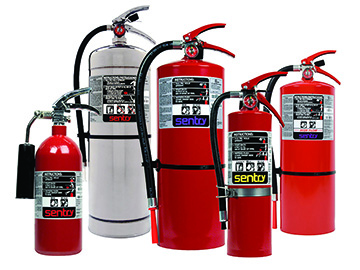
Fire extinguishers are common throughout public buildings and can be used to distract or disable an assailant.
If you find yourself in the confines of an area which you cannot escape, attempting to reason with an active shooter will only give them a greater focus on your whereabouts. Also, whilst under duress, talking will only drain your energy from the mission at hand which is to subdue the shooter by any means possible. Any martial arts training you may have could serve you well here — as in most disciplines, self-defense is the directive.
Addendum To The Protocol
Since the RHF protocol was established in 2012, a fourth element is becoming an apparent addition to the mindset — hemorrhage control. This is the idea that every citizen — while understanding running, hiding and fighting — should also have fundamental knowledge on how to stop bleeding caused by a gunshot wound. This applies not only to yourself, but to those around you. Applying a tourniquet to a limb or direct pressure to a wound can buy a victim precious minutes while help arrives. Captain Gross explains, “Have an active shooter plan for your business, get training (both in active shooter response and basic hemorrhage control). Give good information, description and whereabouts. When police arrive, have NOTHING in your hand, don’t grab the officer, don’t pull the fire alarm.”
Hemorrhage Control
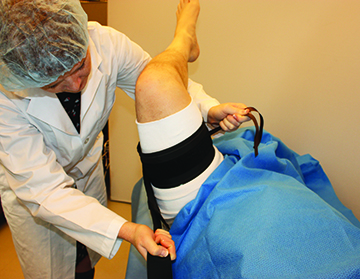
Knowing how to improvise and apply a tourniquet is a crucial part of hemorrhage control.
Injuries to the head or torso require direct pressure with some sort of dense, absorptive material. In the event of a wound to an arm or a leg, a tourniquet can be used to control the bleeding. In an active shooter scenario, you will have to improvise with whatever materials you have immediate access to. Begin by pinpointing the exact location of the wound and exposing the skin. Inform the victim that you will be applying a tourniquet, as their already severe level of pain will be temporarily increased. It is important that the tourniquet be applied between the extremity wound and the heart. The American Red Cross recommends placing the tourniquet two inches above the wound. Use a cloth, towel, scarf or strip of clothing to wrap around the limb and tie it with a regular square not. Then, you will need to apply what is known as a windlass, which is a stick or a ruler — anything strong enough to be used to twist the tourniquet tighter. Place the windlass on the square knot and use the loose ends of the tourniquet to secure it with another square knot. Then, twist the windlass to tighten the tourniquet until the bleeding stops. Once the bleeding has stopped, use another strip of material to tie the windlass to the victim’s limb so that it stays tight. First responders will take over once they arrive, yet be advised that no tourniquet should be left in place for more than two hours.
Regardless of whether you run, hide or fight — the life you save could be your own at the very least. In a best-case scenario, you could help those around you, and if they have the same mindset, perhaps they can help you.
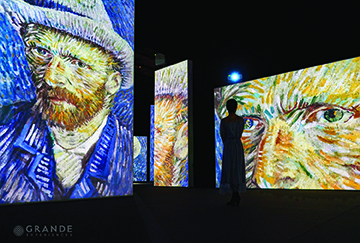
by Mark Smiley | Jul 23, 2021 | Editorials
Multi-Sensory Art Experience In The Hangar Until Sept. 26
by Mark Smiley

Van Gogh Alive: Playing at The Hangar at Aurora’s Stanley Marketplace through September 26. Buy tickets at denvercenter.org.
The Denver Center for the Performing Arts, Stephen Lindsay & Brett Sirota and Andrew Kay Management in partnership with Grande Experiences present Van Gogh Alive, a large-scale, multi-sensory experience that is promoted as entertaining for the entire family. Van Gogh’s works have been displayed and enjoyed around the world for over a century. For a limited time only — through September 26 in The Hangar at Aurora’s Stanley Marketplace — audiences have an opportunity to experience Van Gogh’s artistry and venture into his world.
With a career that ran a little over a decade, he produced an astonishing amount of work: 1,000 drawings, 150 watercolors, 9 lithographs, an etching, and over 900 paintings. Van Gogh is today one of the most popular of the Post-Impressionist painters, although he was not widely appreciated during his lifetime. He is now famed for the great vitality of his works which are characterized by expressive and emotive use of brilliant color and energetic application of impastoed paint. The traumas of his life, documented in his letters, have tended to dominate and distort modern perceptions of his art. This experience walks you through the different paintings and the mood and year in which they were painted. Pay particular attention to the quotes from Van Gogh that appear throughout the exhibit during the show.
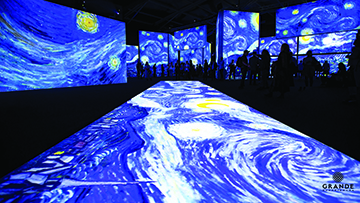 Created by Grande Experiences, Van Gogh Alive, a large-scale, COVID-Safe, multi-sensory digital art experience, gives visitors the unique opportunity to immerse themselves into Van Gogh’s artistry. Traditions of tiptoeing through silent galleries and viewing paintings from afar in quiet contemplation are forgotten as visitors find themselves interacting with art in ways they never imagined. From start to finish, visitors are surrounded by a vibrant symphony of light, color, sound and fragrance that has been called an “unforgettable” multi-sensory experience. Van Gogh’s masterpieces come to life, giving visitors the sensation of walking right into his paintings, a feeling that is simultaneously enchanting, entertaining and educational. Adults and children delight in the super-scale show, viewing artworks from new angles and discovering unique perspectives. But don’t just take their word for it: experience it for yourself!
Created by Grande Experiences, Van Gogh Alive, a large-scale, COVID-Safe, multi-sensory digital art experience, gives visitors the unique opportunity to immerse themselves into Van Gogh’s artistry. Traditions of tiptoeing through silent galleries and viewing paintings from afar in quiet contemplation are forgotten as visitors find themselves interacting with art in ways they never imagined. From start to finish, visitors are surrounded by a vibrant symphony of light, color, sound and fragrance that has been called an “unforgettable” multi-sensory experience. Van Gogh’s masterpieces come to life, giving visitors the sensation of walking right into his paintings, a feeling that is simultaneously enchanting, entertaining and educational. Adults and children delight in the super-scale show, viewing artworks from new angles and discovering unique perspectives. But don’t just take their word for it: experience it for yourself!
Van Gogh Alive is a multi-sensory art experience that involves high-level cinema-quality sound, large scale moving images, theater level lighting and at times loud abrupt sounds. Individual visit times vary, but most visitors anticipate spending approximately 60 minutes in the experience. The main feature of the exhibition lasts around 45 minutes.
 The Denver Center for the Performing Arts, denvercenter.org, is the only authorized ticket provider for this production. There is no minimum age requirement and all attendees need a ticket. The experience is open Sunday, Tuesday, Wednesday, and Thursday from 10 a.m. to 8 p.m. and Friday and Saturday from 10 a.m. to 9 p.m. Follow this experience on social media: #VanGogh Alive and @DenverCenter.
The Denver Center for the Performing Arts, denvercenter.org, is the only authorized ticket provider for this production. There is no minimum age requirement and all attendees need a ticket. The experience is open Sunday, Tuesday, Wednesday, and Thursday from 10 a.m. to 8 p.m. and Friday and Saturday from 10 a.m. to 9 p.m. Follow this experience on social media: #VanGogh Alive and @DenverCenter.

















